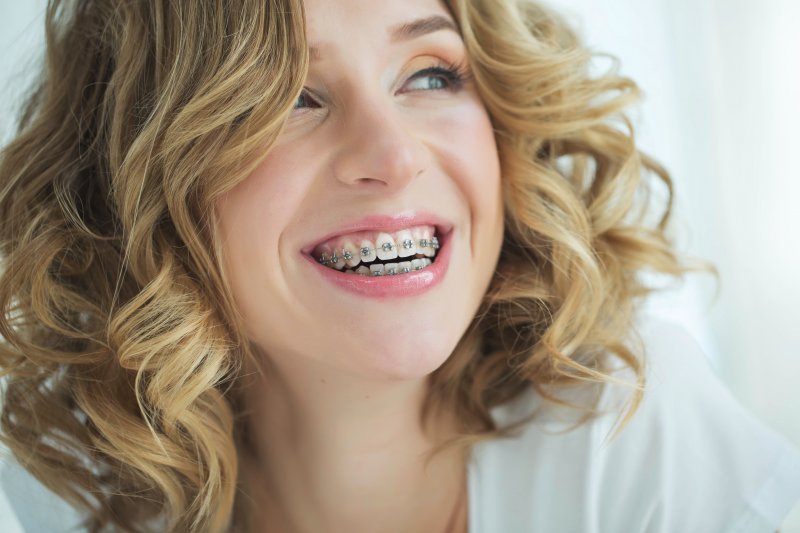
Traditional metal braces are a tried and proven orthodontic method that can address even severe bite misalignments. These appliances consist of brackets cemented to the teeth to provide leverage and archwires run through these pieces to create tension, and these two components work together to gradually shift the pearly whites into healthier positions. However, some patients may need to wear rubber bands on their braces to provide additional force. Here’s a brief guide to how rubber bands work and why they may be necessary for your orthodontic treatment.
How Do Rubber Bands Work?
Rubber bands, also called elastics, hook onto an orthodontic patient’s brackets to provide additional force. Depending on your situation, your dentist may recommend using elastics to address issues such as:
- Overbites
- Underbites
- Crossbites
- Open bites
- Straightening out a single tooth that leans backward
- Aligning the spaces between the top and bottom front teeth so they match one another.
What Types of Rubber Bands May Be Used?
Orthodontic rubber bands are produced by a number of manufacturers and come in many varieties. Different types of rubber bands can vary considerably in factors like:
- Force: The force exerted by orthodontic rubber bands is measured in grams (g) or ounces (oz). These appliances are sorted into light, medium, and heavy categories.
- Size: Rubber bands come in a variety of different sizes and are measured by their diameters in terms of fractions of an inch. The appropriate size for you depends on how far the appliance needs to stretch.
- Material: Rubber bands are made from either latex or synthetic. While latex is the more common material, synthetic can be used for patients with latex allergies.
What Is Wearing Rubber Bands Like?
When you need to start wearing rubber bands depends on the specific details of your treatment plan. For example, some patients may need to start wearing elastics after receiving a few adjustments, but others may only need them toward the end of their treatment. Your rubber bands will stretch out and lose their elasticity when you wear them, so you will have to change them out multiple times a day as recommended by your orthodontist, and the total time you spend wearing them can range from a few weeks to several months.
Your orthodontist will provide specific instructions for when you need to wear your elastics, but most patients will have to wear them almost all of the time. However, many may need to remove these appliances during meals or oral hygiene sessions.
Rubber bands may be an essential part of achieving your ideal smile. Strictly following your orthodontist’s instructions will lead to marvelous results.
About the Author
Dr. David W. Cordes earned his dental degree at the University of Connecticut School of Dental Medicine and specializes in orthodontics and dentofacial orthopedics. He is proud to serve as a member of the Northeastern Society of Orthodontics, the American Association of Orthodontics, and the American Dental Association. His offices in Westfield, Enfield, and Suffield offer traditional braces, Invisalign clear aligners, Orthognathic Surgery, and orthodontic emergency services. To learn more about orthodontic treatment, contact his practice online.
